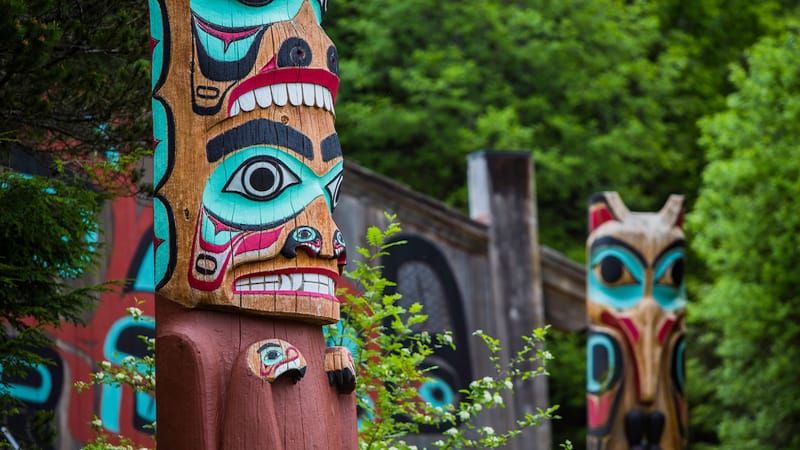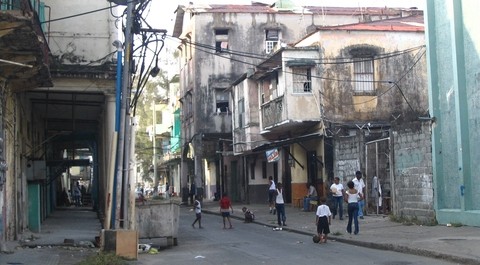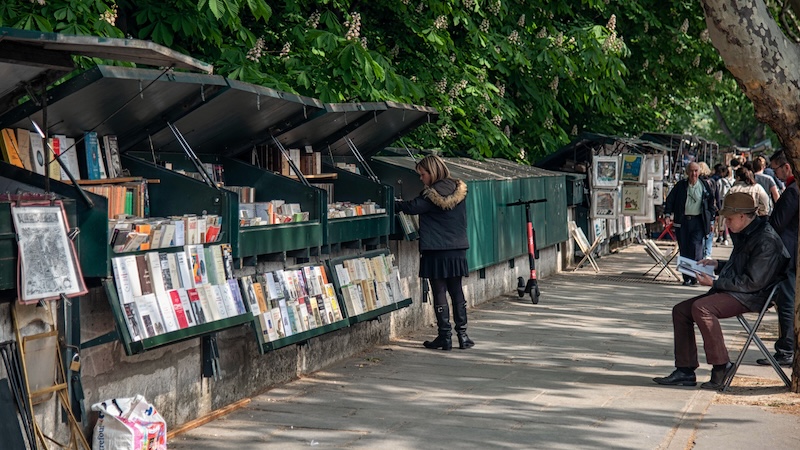‘That’s Not in the Guidebook’
And that’s a good thing

Decades ago, on their honeymoon to Nassau, a tour guide told Dale Davis and his bride to look outside of the guidebook. Decades later, they still embrace his advice.
Our bus driver Clarence waved to the cars honking and passing us on the narrow road. My wife gripped my hand and wondered why we were seeing this rundown area of Nassau. We were on our honeymoon, hoping to return safely to our ship and not crash into oncoming traffic.
The bus glided past dilapidated homes, each faded and tinged with dark splotches, unlike the million-dollar mansions we had seen earlier. Faded cars stood in gravel driveways or in tall grass. Children and women stared from the yards and front porches; some waved to us, some ignored us.
Clarence cleared his throat before speaking into his microphone. “Now I’m gonna get you back to the beach and your cruise ships, but I like to end my tours showing folks something that’s not in the guidebooks.
 “These people, Nassau’s their home. Lots work in the luxury hotels, only they don’t live in luxury. Tomorrow, after you leave, next week when you get home, they gonna be here. These people live here, work here, make babies, and die here, not in big homes. That’s okay. They get by. That’s what you got to see and take back home.”
“These people, Nassau’s their home. Lots work in the luxury hotels, only they don’t live in luxury. Tomorrow, after you leave, next week when you get home, they gonna be here. These people live here, work here, make babies, and die here, not in big homes. That’s okay. They get by. That’s what you got to see and take back home.”
My wife and I looked out the widow and nodded. Nassau was a Caribbean paradise with enchanting white beaches and iridescent blue water, a magical place to begin our lives together. For the people in this struggling neighborhood, Nassau and its surrounding areas were home. We were guests. Photographs would be stored in boxes, souvenirs would be discarded, but Clarence’s words traveled with us on many journeys.
Thirty years of jobs, mortgages, and kids rolled by, so we escaped for a while to celebrate in Alaska. At Ketchikan, our last destination, we disembarked our ship as people boarded an aircraft carrier-sized tour bus. We approached a young woman holding a sign bearing the name of our tour package and introduced ourselves. After a few pleasantries, Lilly pointed to a dark blue minivan and told us we were her only passengers for the trip. Did we buy the wrong tour?
As we buckled our seatbelts, Lilly told us the tour covered the downtown district, some parks, and the Saxman Native Village. I stretched my legs as she pointed to businesses where we might later shop and enjoy lunch. We drove behind several stores, taking in the trash bins, old cars, and rusted back doors.
Lilly glanced in the rearview mirror and said, “I’m sorry for going this way, but it’s a quicker route to the park I want to show you.”
As she drove, she explained Ketchikan’s history and culture, the totems situated around town, and that she and her husband, a mechanic, had lived in Ketchikan all their lives. Their five-year-old daughter was spending the day with Lilly’s mom. This tour job provided them extra money.
We were seeing things not in the guidebook.
At the Saxman Native Village, we watched a ceremonial show, and Lilly showed us an artisan’s workshop for carving totems. After buying souvenirs in the gift shop, we climbed into her minivan. I saw the same large tour bus pulling into the parking lot.
“Would you all mind if I make a quick stop?” Lilly asked, pulling out of the parking space. “I need to drop something off at my mom’s house.” She looked back in the mirror and smiled. Ten minutes later, she pulled into a driveway of a small white house, walked to the front door, and slipped a white envelope into the mail box.
A silver truck slowed and honked. Lilly waved and shouted to the driver while my wife and I discussed options for lunch. Backing out of the driveway, she explained the guy in the truck was her cousin who was heading to college in the fall. As we chatted, I remembered Clarence encouraging his passengers to see more of a place than just the sites in the tourist guidebooks. Lilly had provided a warm and intimate perspective of her home, Ketchikan, reflecting the history and spirit of Alaska, not some canned speech delivered by a tour guide who would disappear at the end of the summer.
How can we know a place if we don’t try to know its people? We gain a greater sense of community in this world when we see sites that are not in the guidebooks, when we understand the people who call Paradise home. They see the ordinary in the extraordinary, the familiar in the magical. If we learn from them, we come home and look for the extraordinary in the ordinary, the magical in the familiar sites of home.
We travel to appreciate home. We come home enriched by the experience.
Dale Davis retired from his post of teaching writing in the community college system to work full-time on writing about subjects he loves. His article “The Oddball Kid and the Adventure of the Paperback Heroes” was published on the Mystery Tribune website. He published “The Road Ahead: Visions of Retirement” in Boomer in January 2023.
Read more childhood memories and other contributions from Boomer readers in our From the Reader department.
Have your own childhood memories or other stories you’d like to share with our baby boomer audience? View our writers’ guidelines and e-mail our editor at Annie@BoomerMagazine.com with the subject line “‘From Our Readers’ inquiry.”



